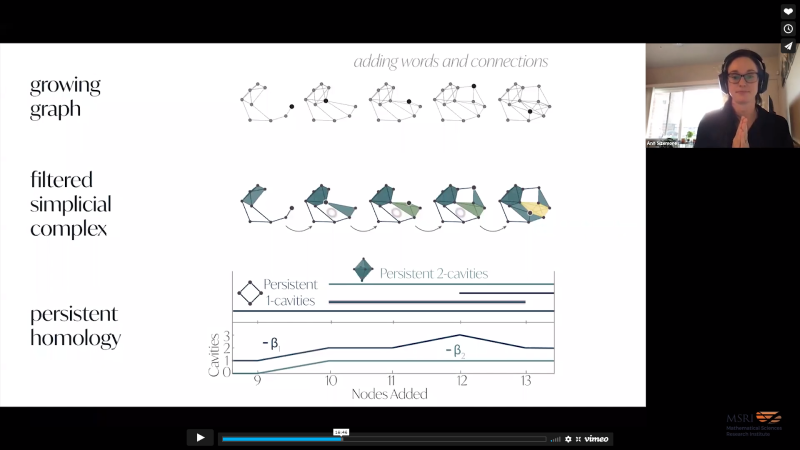Topological cavities in the human connectome
Presenter
May 11, 2021
Keywords:
- neuroscience
- applied topology
MSC:
- 55U99
Abstract
The convoluted web of interactions within the human brain expertly supports a diverse array of behaviors. Modeling the brain as a network with brain regions as nodes and white matter tracts as edges has provided a wealth of information about the global organization of the connectome. Specifically, network science has shown the brain functions via collaboration between sets of densely connected regions called modules. However, the importance of sparsely connected regions – or topological cavities – around which information must flow remains elusive due to the inability to detect such structures with traditional network measures. Such cavities may serve to intentionally separate tasks or allow parallel processing of information. In this study we leverage the capabilities of algebraic topology to both detect and chronicle topological cavities within the adult structural brain network. We find that multiple topological cavities exist and extract participating brain regions in order to determine cavity function. Furthermore, we show that many of the recovered persistent cavities do not exist in an energy-conserving minimally-wired null model of the structural brain network. Additionally, by comparing with a cortical-only subset of the brain network, we determine that subcortical nodes often project onto many cortical cycles, agreeing with previously-reported findings on subcortical connectivity patterns. Finally we show that many recovered persistent cavities exist across multiple individuals and that these features are not necessarily lateralized. We discuss possibilities for topological methods in disease detection and suggest roles for topology across scales of neuroscience.
